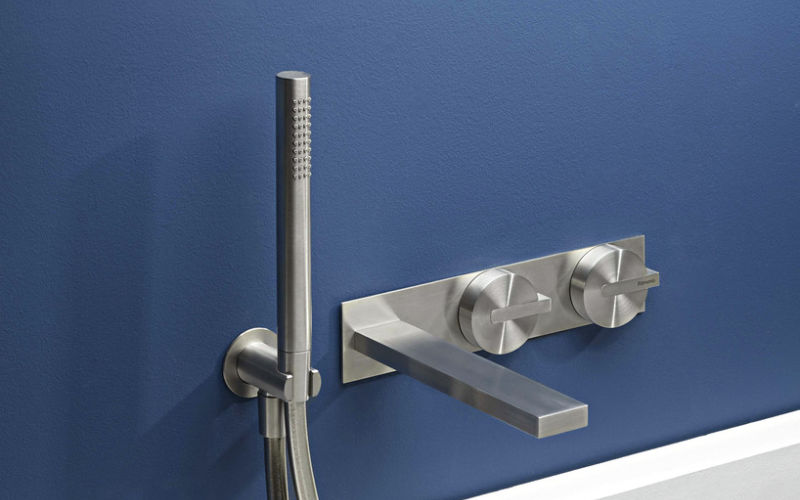Back | Blog posts overview
Tapping into stainless steel
05/08/2021
Italian design has always been synonymous with style and luxury, with a flair for making the functional beautiful. Whether Vespa or Ferrari, Benetton or Gucci, furniture or eyeware, Italian style imbues a touch of bellezza to all facets of life. Italian bathrooms and kitchens are no different. Sleek, moly-containing stainless steel fittings also contribute to the tradition of combining utility with elegance and glamour.

© Ritmonio
In a world where the COVID-19 global pandemic has intensified the focus on hygiene, many are spending more time than ever washing their hands. This mundane task, and the humble faucet that enables it, has never been more important. Italian designers have increasingly embraced designing faucets with stainless steel, not only for its unique beauty but also for its innate hygienic properties. The non-porous surface of stainless steel makes it more difficult for bacteria, germs and other deposits to attach and accumulate. Such a smooth surface is also easier to clean, making it a safe and more hygienic choice in both the kitchen and bathroom. As the world adapts to reduce and prevent the spread of pathogens, it is no wonder these attractive, practical faucets are increasingly popular.
Until recently, stainless steel was predominantly used for industrial valves. More expensive than brass and harder to form and machine, use for kitchen and bathroom fittings was rare. Yet, since the late 1990s more and more Italian manufacturers are using stainless steel for everyday water fixtures. While Type 304 stainless steel is used in much of the mass market, a number of high-end companies have chosen to use Type 316 stainless steel exclusively, or nearly exclusively, for functional, aesthetic and ethical reasons. The first model using Type 316 stainless steel in Italy was created in 1997, and other producers followed suit. Interestingly, many of them advertise their products with '316' in the article or model name, to emphasize high quality.
Type 316 is a more corrosion resistant grade of stainless steel, typically containing 2% or even 2.5% molybdenum. The addition of molybdenum makes the steel extraordinarily resistant to corrosion without additional treatment, even when used in harsh marine environments or for drinking water containing relatively high amounts of chlorides. High corrosion resistance under these conditions makes it well-suited for domestic faucets and shower fittings a well as outdoor spa, shower and pool fittings. Type 316 is not only more durable than Type 304 stainless steel, but it is also more resistant to harsh cleaning agents. If not properly rinsed, Type 304 can stain when cleaned with an aggressive product, while Type 316's superior corrosion resistance avoids many of these problems. For hospitality settings, like hotels, where the same powerful detergents used to wash the floors, sinks and tubs are often used in the daily cleaning of fittings, this is a significant advantage.
Discover more about why socially responsible consumers and manufacturers have additional reasons for a growing interest in molybdenum-containing stainless steel faucets and bathroom fittings.
Back | Blog posts overview

